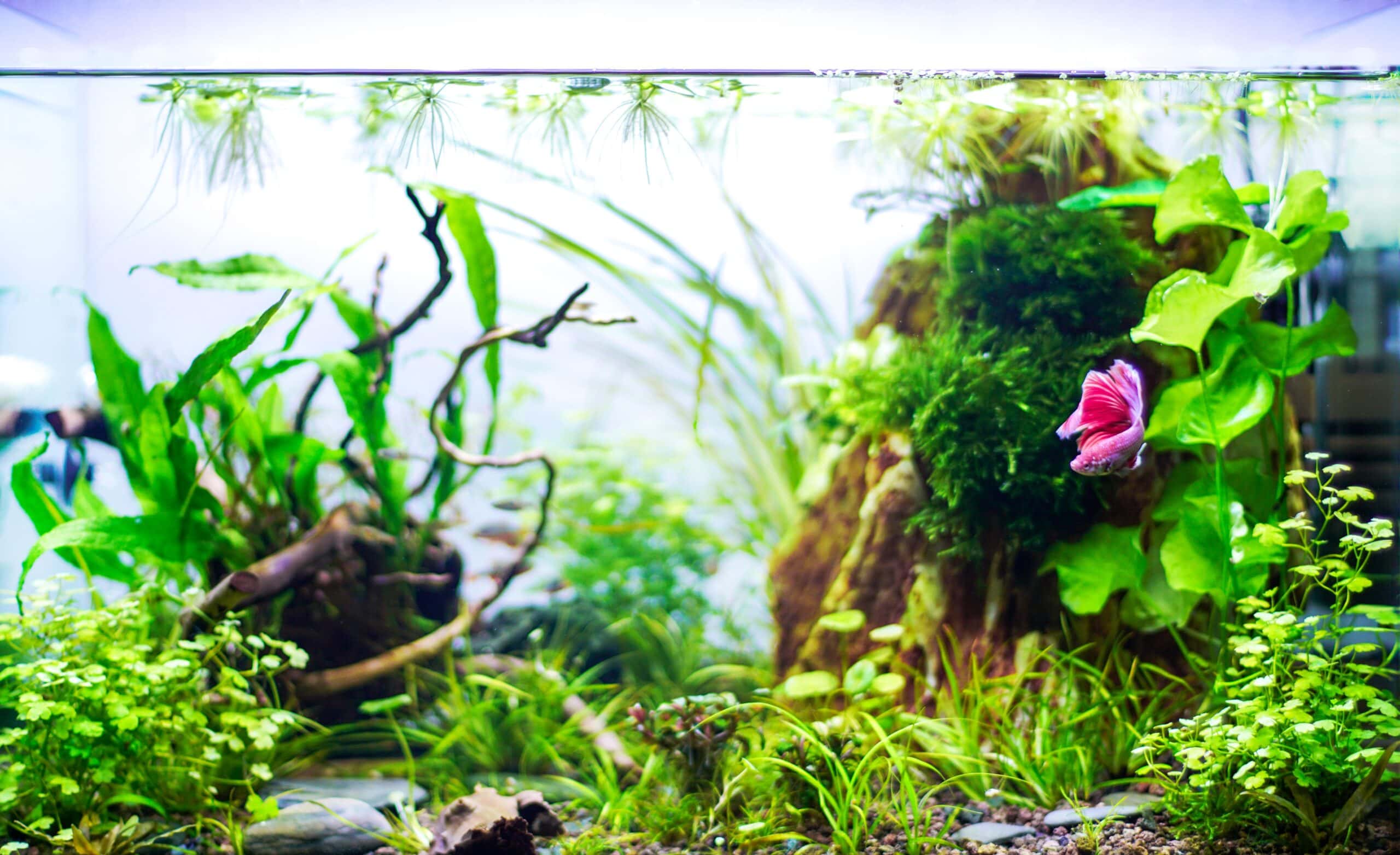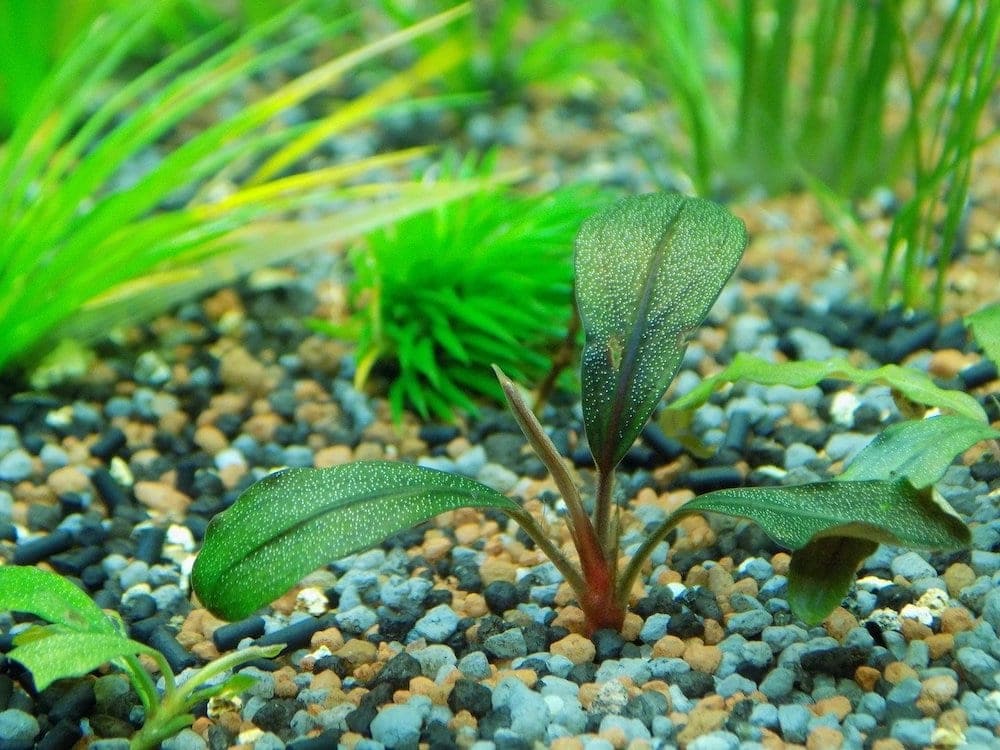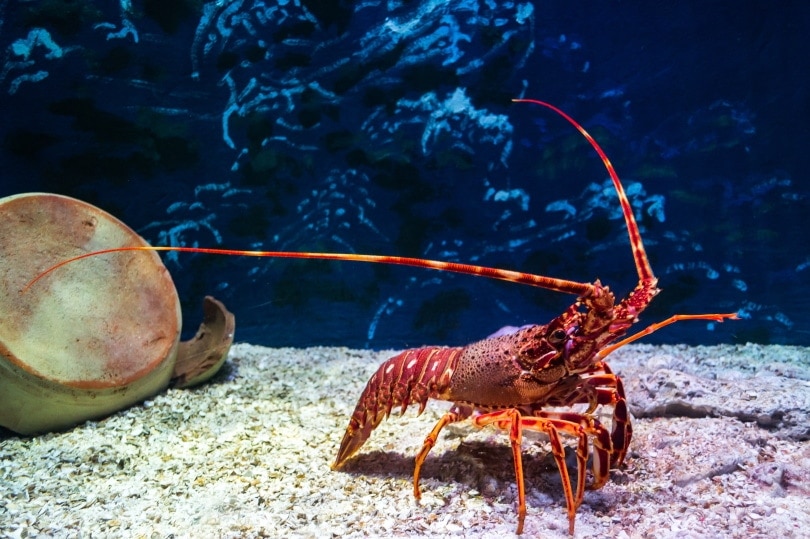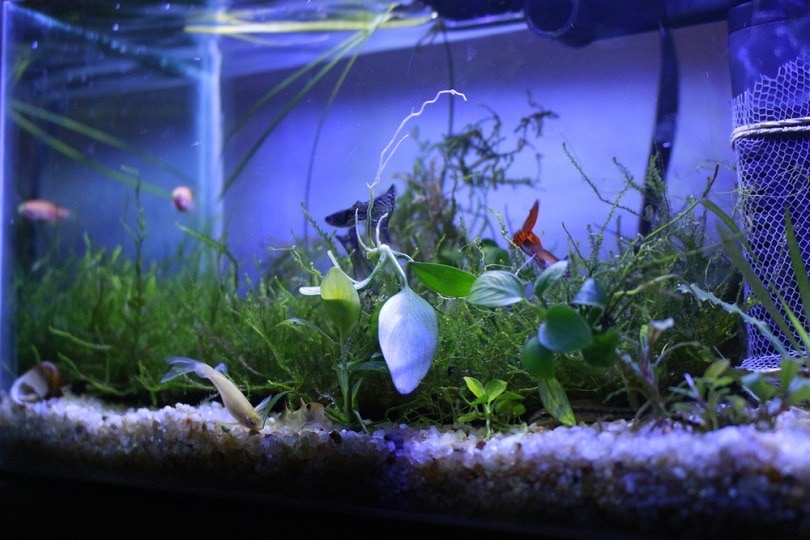Amano Shrimp Per Gallon: Calculating the Right Amount for Your Tanks (Vet-Approved)

Updated on
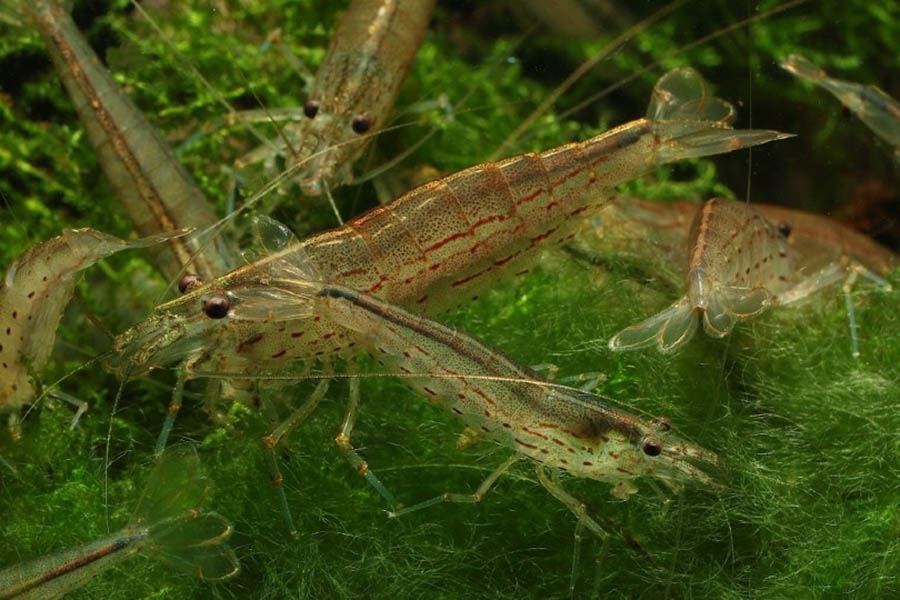
Fishkeepers love shrimp because they help keep aquariums clean and algae-free. We love Amano shrimp because they eat large amounts of algae and they’re easy to care for. Plus, they’re peaceful and make ideal tank mates for a variety of fish species.
Amanos are happiest with other members of their own shrimp species and need plenty of space to thrive. The number of Amano shrimp that are suitable per gallon of water depends on your unique aquarium and what other fish you are keeping. In this article, we look at some of these factors so you can estimate how many Amano shrimp are suitable for your home aquarium. Let’s get started!
How Many Amano Shrimp Are Suitable Per Gallon of Water?
In general, if your tank is under 10 gallons, you should spare at least 1-2 gallons per shrimp as a bare minimum. However, if your tank is somewhere in the 10-20-gallon range, 1 gallon per shrimp should suffice. Beyond 20 gallons, 2 gallons per shrimp is considered acceptable.
As a general rule, offering more gallons per shrimp is always better. The reason why smaller aquariums cannot house the same ratio of shrimp per gallon is because it is more difficult to sustain an ecosystem and consistent water parameters in a smaller volume. Conversely, this task becomes much easier as the tank volume increases. Therefore, a stable larger aquarium can easily sustain multiple shrimp per gallon of volume.
| Aquarium Capacity (US gallons) | Ideal Amano count |
| 5
10
20 |
3
10
20 |
| 30 | 35 |
| 40 | 50 |
| 50 | 70 |
| 60 | 80 |
Please note that ideal Amano counts above estimate a stocking density of around 50% per volume. Shrimp need a heavily planted aquarium, which limits the free space available to stock more shrimp. The counts above do not factor in tank mates. If there are other species in the aquarium, the ideal count should be drastically reduced to find an ideal amount for your aquarium.
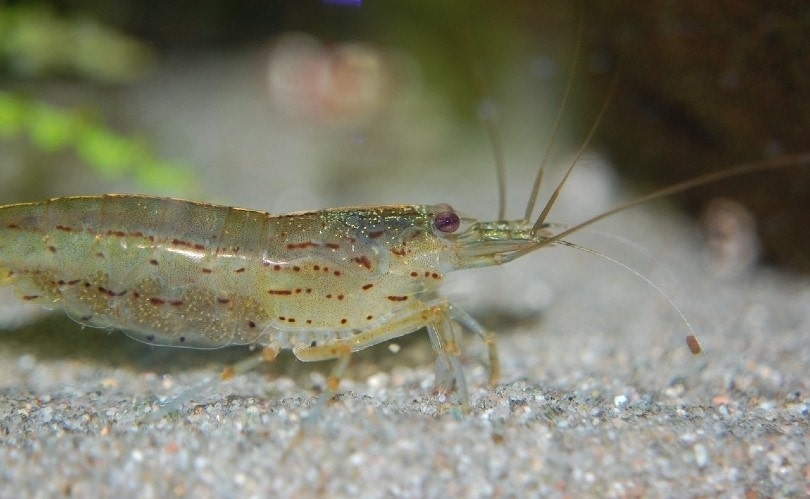
What Do Amano Shrimp Eat?
In general, Amano shrimp feed mainly on algae. However, it isn’t right to expect them to sustain themselves on just algae alone. Amano shrimp are omnivores and do best on algae wafers and supplements of Daphnia and other foods, such as cucumber.
Amano Shrimp Tankmates
Amano shrimp can live peacefully and happily with most fish species, but they are fairly small shrimp (1-2 inches) and may be seen as prey by large, predatory fish. If the fish can fit an Amano shrimp in their mouth, your shrimp are definitely at risk of being eaten. These include fish like Bettas, large Plecos, and Gourami.
- Bristlenose pleco
- Tetras (neon)
- Discus
- Tiger barbs
- Cory catfish
- Cherry shrimp
- Ghost shrimp
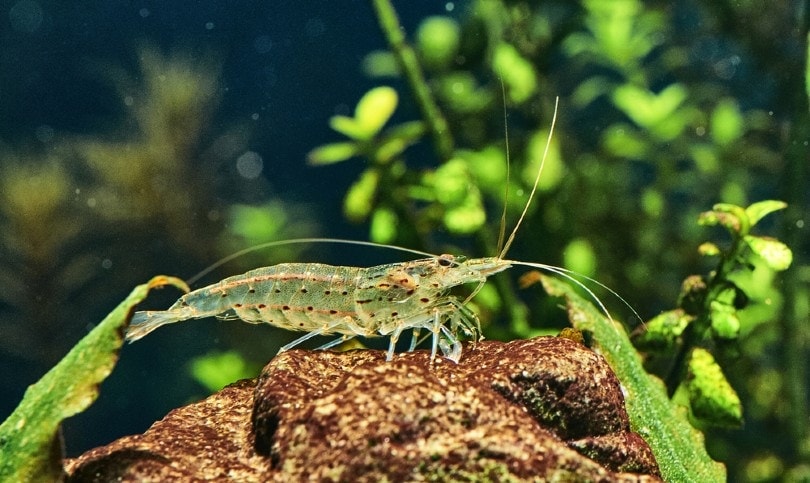
Amano Shrimp Lifespan
It’s highly unlikely that your Amanos will breed in your community tank because they require brackish water for reproduction. So, your tank will likely not be overpopulated with Amanos unless you add too many, and they will probably live out their entire lives in your tank without reproducing.
Depending on the tank conditions, Amano shrimp typically live for 2 years on average, and the most vulnerable time for them is the first few days after they’ve been added to your tank. If they survive the first few days or weeks, though, they will most likely live a long life. Most Amano have an average lifespan of 2 years, but with proper care, they are known to anecdotally live for up to 5 years.
Final Thoughts
In general, one Amano shrimp per 1–2 gallons of water is a good rule of thumb, with a minimum tank requirement of 10 gallons, as you’ll need to keep them in groups of at least five to six shrimp. However, this is the bare minimum requirement, and there is a difference between thriving and surviving. We recommend a baseline of a 20-gallon tank with a troupe of around 15-20 shrimp to make sure they have the space and food that they require. Amano shrimp are hardy and easy to look after and make great additions to any community tank!
Featured Image Credit: Dan Olsen, Shutterstock



